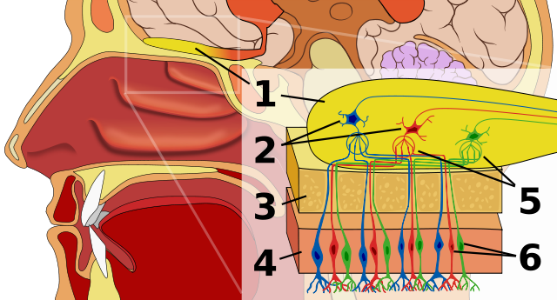The spinal cord is responsible for communication between the brain and the central nervous system, which is the command center for our body’s actions. It’s what allows us to pick up a toothbrush and apply some toothpaste when we think, “time to brush our teeth”.
It’s what allows us to roll our eyes when a patient (or doctor) says something idiotic. That’s why damage to the spinal cord often results in paralysis much like the case of Derek Fidyka, a man who became paralyzed and lost sensation from the chest down after getting stabbed in the back repeatedly in 2010. The attack left him with a seven millimeter gap in his spinal cord.
While spinal cord damage is generally believed to be permanent for the two to three million who suffer from it world-wide, 40-year-old Fidyka is now walking again, thanks to a first-of-its-kind procedure that used “nose” cells to repair spinal cord injuries.
The olfactory system, which controls our sense of smell, is the only part of the nervous system that always repairs itself. Olfactory Ensheathing Cells (OECs) behave as pathways in the olfactory system that allow nerve fibers to continually regenerate.
With that in mind, surgeons removed one of Fidyka’s olfactory bulbs and grew OECs in a culture. Two weeks later, the OECs were surgically implanted in his spinal cord --- just a “drop” of OECs were developed, about half a million cells, inserted with 100 micro-injections, BBC reported.
Scientists believe that the OECs, placed above and below the injured area, allowed the fibers to bridge the gap and reconnect.
Before the surgery, Fidkya had been paralyzed for two years, but just three months after the procedure, he began to put on some muscle. Six months later, he was able to take his first steps along side parallel bars, using leg braces. Two years later, he walked outside of his rehab center just using a frame in October.
He told the BBC that walking with just the frame was “an incredible feeling”.
“When you can’t feel almost half of your body, you are helpless, but when it starts coming back it’s like you were born again,” Fidkya said.
A United Kingdom research team led by Prof. Geoff Raisman, chair of neural regeneration at University College London’s Institute of Neurology, worked with Polish surgeons who performed the surgery on Didyka.
He said the success of this treatment is “more impressive than man walking on the moon”.
While scientists have been examining the repair of spinal cord damage through other means including stem cells, researchers believe that the OEC therapy breakthrough was a success because the cells came from the patient himself. There was no danger of the body rejecting the implant, and there was no need for immunosuppressive drugs.
Fidkya becomes exhausted easily, but Dr. Pawel Tabakow, a consultant neurosurgeon at Wroclaw University Hospital, says he believes he will one day become independent. Fidyka’s body continues to repair, having recently gained more bladder, bowel and sexual sensation.
The research surrounding the procedure was featured in the Cell Transplantation journal, and researchers are hopeful that this major success is just the beginning of discoveries that will be unearthed for spinal injuries, and OEC treatments in general.
For more about the patient and his miraculous experience, click here: http://www.bbc.com/news/health-29645760#story_continues_2

